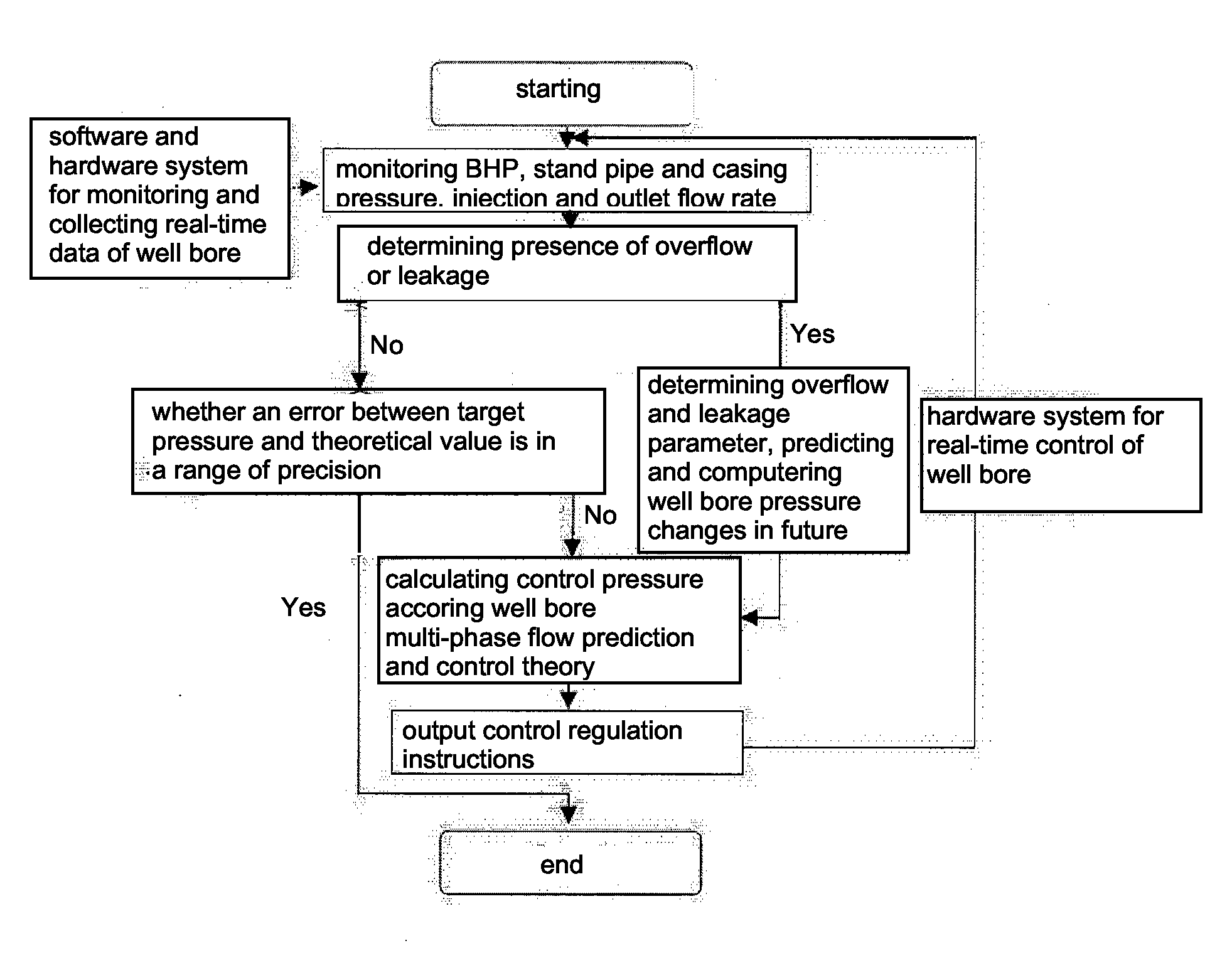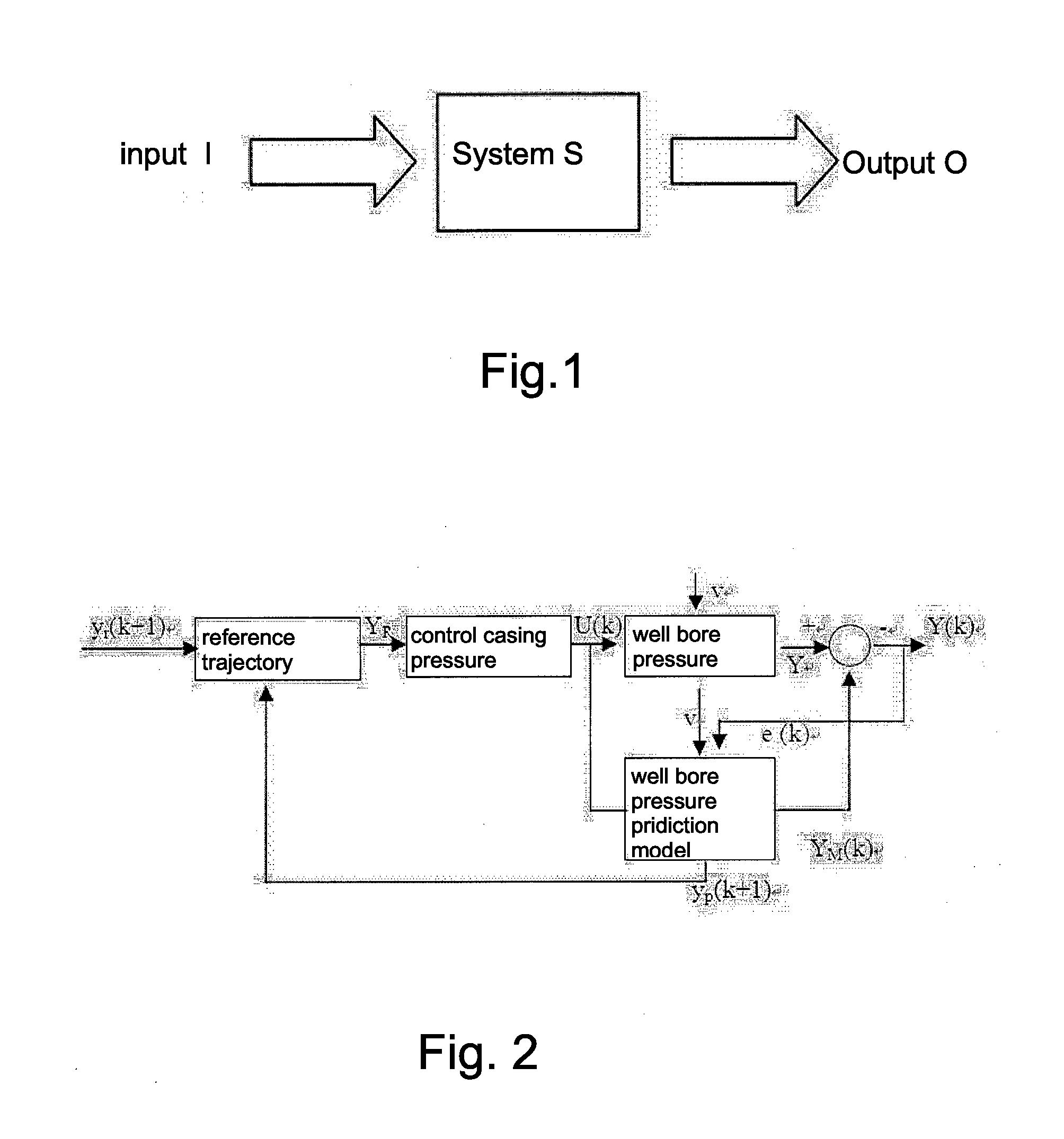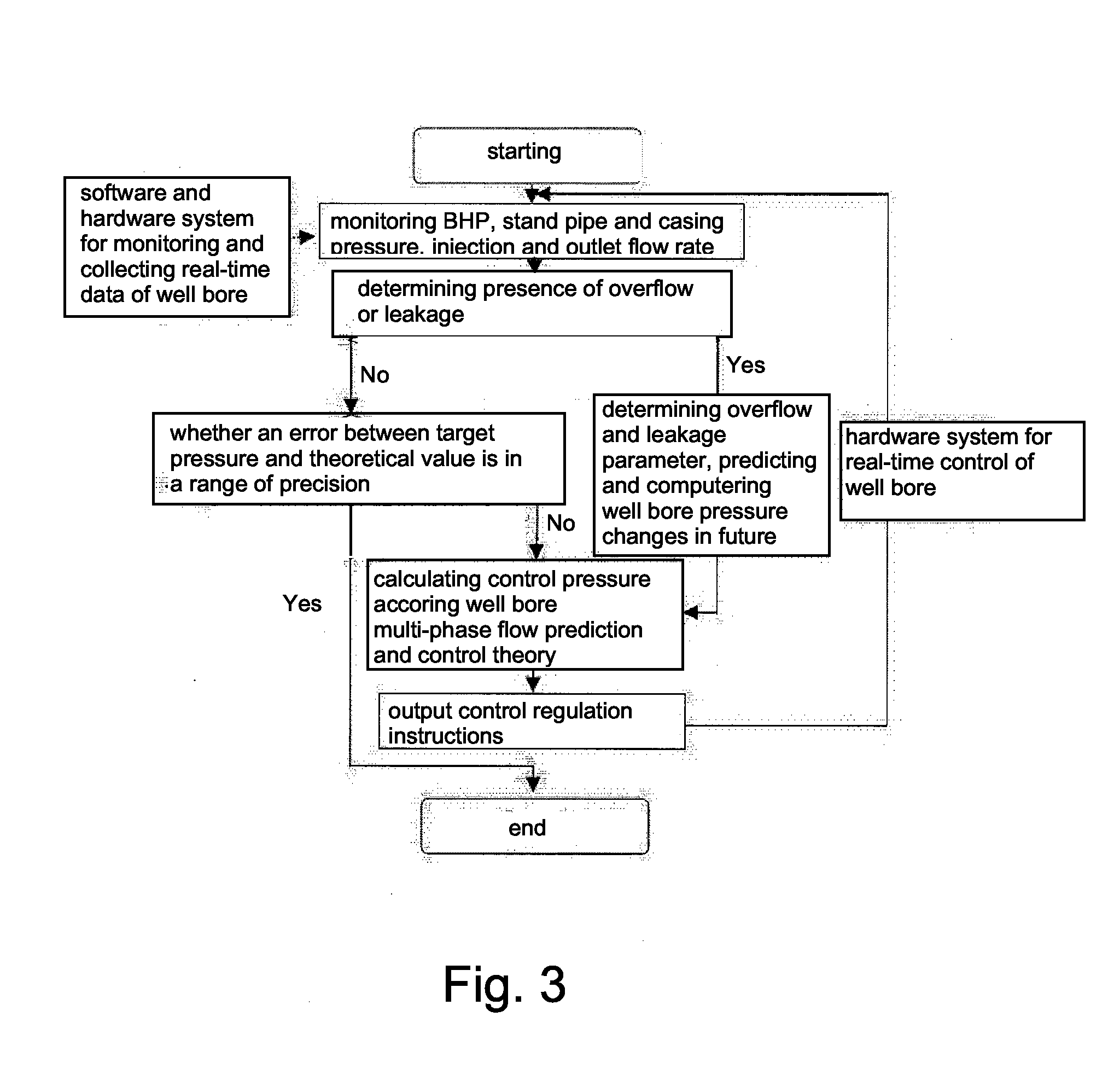Method for controlling well bore pressure based on model prediction control theory and systems theory
a control theory and system theory technology, applied in the direction of borehole/well accessories, survey, construction, etc., can solve the problems of inability to meet production requirements, wide fluctuation of well bottom pressure, failure of fine control of well bore pressure,
- Summary
- Abstract
- Description
- Claims
- Application Information
AI Technical Summary
Benefits of technology
Problems solved by technology
Method used
Image
Examples
embodiment 1
[0069]The present invention discloses a method for controlling well bore pressure based on model prediction control theory and systems theory, comprising steps of:
[0070]detecting a well bottom pressure, a stand pipe pressure, a casing pressure, an injection flow rate and an outlet flow rate during construction process;
[0071]determining presence of overflow or leakage;
[0072]if there is no overflow or leakage, then fine-adjusting the wellhead casing pressure according to the slight fluctuations of the well bottom pressure, the stand pipe pressure or the casing pressure, so as to ensure that the well bottom pressure the stand pipe pressure or the casing pressure is at the set value;
[0073]if there is overflow or leakage, then using a well bore single-phase or multi-phase flow dynamic model to simulate and calculate the overflow or leakage position and starting time of the overflow or leakage, predicting the variation over a future time period of the well bore pressure in the well drilli...
embodiment 2
[0077]According to another preferred embodiment of the present invention, working principle of the present invention and the technical solution utilized thereof are as follows.
[0078]1. During the process of controlling the well bore pressure, the well bore is treated as a large scale system for pressure controlling.
[0079]During the process of well drilling, due to the uncertainty of formation pressure, the formation fluid may enter the well bore while opening the ground with supply ability, and entrance amount thereof is not only related to formation parameters but also affected by the well bottom pressure. The well bottom pressure is directly influenced by the casing pressure, and is further influenced by recurrent state and friction pressure drop. When the formation fluid enters the well bore, flow status inside the well is changed, which influences entrance flow in reverse. Thus, the well bore and the formation are interacted and coupled with each other to form a unified wholenes...
embodiment 3
[0091]Referring to accompanying drawings of the specification, a best mode of the present invention is as follows.
[0092]A basic algorithm for the controlling method of the prediction system of the well bore pressure model is as follows.
[0093]In the well bore system BHP=f(QL,QG,ρL,μL,Pc,ΔQKL,HKL,TKL,OD,ID,L,α . . . ), if variable parameters are not determined to be leakage and overflow amount of the drilling fluid, distribution of the well bore pressure changes accordingly, wherein control object is set to be achieved by adjusting the casing pressure.
[0094]As shown in FIG. 3 of the drawings, according to control principle of the well bore pressure model prediction, parameter relationship of the well bore pressure can be described as a form of model prediction control equation, which is expressed as follows:
{x→=fR[x→(t),u(t),ΔQKL]y(t)=gR[x→(t)]+ey,(1)
[0095]wherein fR[•], gR[•] respectively represent well bore pressure system, a computing model thereof is calculated by theoretical form...
PUM
 Login to View More
Login to View More Abstract
Description
Claims
Application Information
 Login to View More
Login to View More - R&D
- Intellectual Property
- Life Sciences
- Materials
- Tech Scout
- Unparalleled Data Quality
- Higher Quality Content
- 60% Fewer Hallucinations
Browse by: Latest US Patents, China's latest patents, Technical Efficacy Thesaurus, Application Domain, Technology Topic, Popular Technical Reports.
© 2025 PatSnap. All rights reserved.Legal|Privacy policy|Modern Slavery Act Transparency Statement|Sitemap|About US| Contact US: help@patsnap.com



